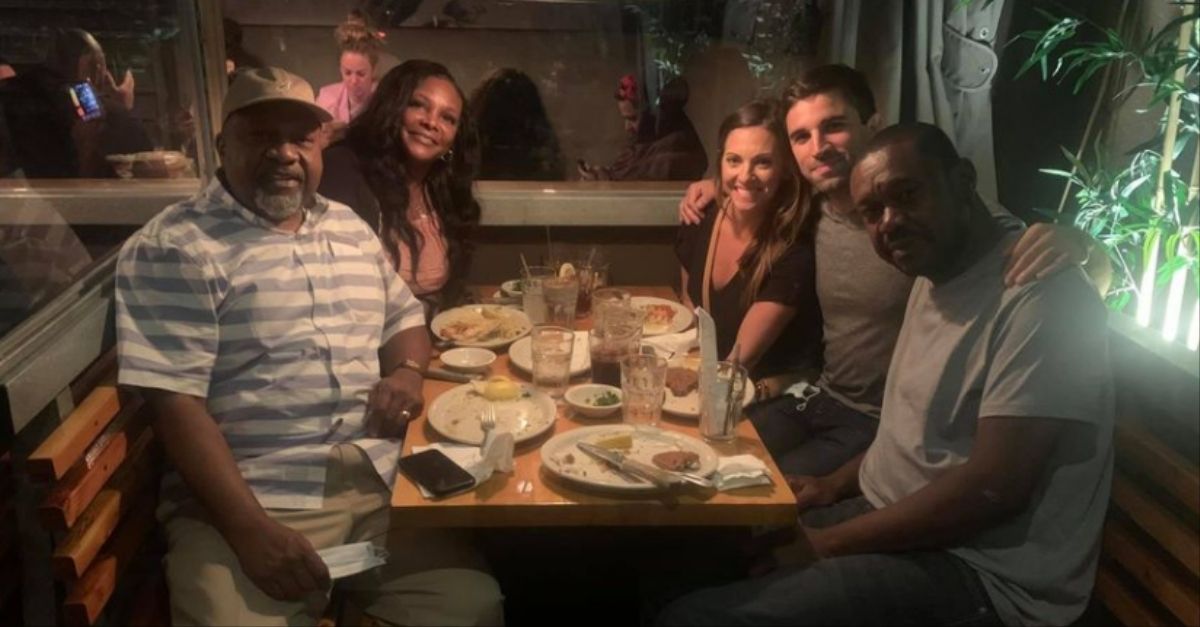
Amazing
Kind couple reunite homeless man with his family after 20 years apart
“Everyone just stares at me. I’m an educated man, but all they see is a person who doesn’t have a home and doesn’t have anyone to call.”
These were the sad, heartbreaking words Randi Emmans heard as she stepped outside her apartment in Los Angeles to take her dog on a walk. 54-year-old Petro Reid was the man Emmans had just heard talking to himself, and he was in a bad place mentally.
She called up her boyfriend, John Suazo to jointly hold a conversation with Reid. He was quite surprised at first, because according to him, no one had ever taken interest in him, and he poured out his mind to them.
For a homeless man, the person they had just held a conversation with was very fluent in expressing himself.
“He was so impressive,” said Suazo.
“The whole conversation really touched us.”
From the conversation, they found out that Reid had left his family home in Charleston, S.C., and moved to L.A. in 1999 to live with an aunt. Barely a year later, he found himself going off the rails and homeless due to drug and alcohol addiction.
He became a popular figure in jail, from where he’d occasionally call home and send letters to his grandmother’s house in Charleston.
“It was always for petty crimes, usually shoplifting to support my habits, food and things of that nature,” he said. “That cycle continued for years, and whenever I got released, I was right back on the streets.”
For more than two decades, Reid wandered the streets of L.A. in search of his family or some beacon of hope, and for those two decades he didn’t find anything- until Emmans heard him.
He had lost all hope of living a decent life. He always thought of his family, but the chances of setting eyes on them once again were pretty dim, so he gave up.
He found Emmans and her boyfriend non-judgmental. They genuinely cared about his situation and that was why he opened up to them.
“John and Randi saw me as more than what everyone else saw me as — just a homeless person living on the streets,” he said. “They believed in me, despite the situation they found me in.”
After giving him food, water, and other basic human needs, the couple felt they hadn’t done enough to truly take him out of misery and ridicule. Emmans made a post on Facebook, a public plea asking for donations to help cover the costs of a night or two at a hotel, so Reid could get rest up, recuperate, and have decent hot meals.
Her post received a lot of engagements, and in only 3 days, they were able to raise about $6,500 for Reid. The funds were used to lodge him in a hotel, get him a new mobile phone, and buy him some new clothes.
Although grateful for all Emmans and Suazo had done, Reid still wanted to find his family. He asked the couple for help and they decided to help him.
Reid took on the name Franklin Mitchell after an encounter with the police in L.A. He didn’t have his identity card, so the name stood- that was why his family members could never reach him.
In the search for his family, Reid gave Emmans and Suazo some names he could remember, as well as his grandmother’s address, without knowing if she was still living there or alive at all.
“Randi and I started plugging away on the Internet, and we were able to find his grandmother’s name associated with the address,” Suazo said. “We called wrong numbers until, finally, we got someone who was his uncle’s ex-wife.”
This was when all the dominoes started falling in place.
Reid’s uncle, Pierre Grant was informed by his ex-wife of a certain contact about his nephew and he immediately called the couple to set up a meeting.
Grant said “For over 20 years, we had been praying and believing that one day we would find him, and the day finally came. This is a miracle.”
He took a flight paid for by Emmans and Suazo to L.A. to link up with his nephew. The amazing couple were also able to pay for a covid-19 test for Reid, Grant, and themselves- all which came back negative.
The long awaited family reunion came on Friday, August 7. Mia Green, Reid’s cousin was also present for the reunion. It was a touching and soulful moment for Reid as he tightly embraced his cousin and uncle after 20 years of wandering the streets of L.A.
Now that Reid has finally reunited with his family, he plans to get his life together and back on track.
“I believe I can help a lot of people that are still in the position that I was in,” said Reid.
He plans to start the next chapter of his education and find himself a stable, paying job.
Amazing
From Wheels to Wonder: Paralysed Skater Transforms Old Boards into Bold Sculptures

When Nick Harding lost the ability to skateboard, he never imagined he’d find a new way to stay connected to his lifelong passion — through art.
In 2019, Nick was suddenly paralysed by Guillain-Barré syndrome (GBS), a rare auto-immune condition where the immune system attacks the nervous system. What started as a sore hamstring quickly escalated into a medical emergency. Within an hour of arriving at the hospital, he was on life support. He spent 13 weeks in intensive care at Southmead Hospital in Bristol and seven months in recovery, relearning how to walk and use his arms.
“Skating has always been a huge part of my life,” Nick said. “Having an outlet for that desire to play with my favourite toy is what brought the sculptures about.”
With his old decks stacked in a corner and his body still rebuilding strength, Nick began experimenting. His early attempts to make practical items were shaky — his hands lacked coordination — so instead, he focused on creating something beautiful. With no prior carpentry experience, he turned to YouTube tutorials, teaching himself to shape, sand, and finish colorful, psychedelic forms from the layered wood of worn-out skateboards.
The process helped rebuild his dexterity, but it also served as a mental anchor. “I just focused on doing a little bit every day,” he said. “It was the process that felt good when I was at my lowest.”
Now, Nick sells his sculptures through his Etsy shop Mobius Maples and has gained fans from around the world. His pieces — all carved from donated, broken, or retired boards — are abstract, swirling forms that capture the movement and spirit of skateboarding.
But for Nick, it’s not just about the art or even the recovery. It’s about staying connected to the Bristol skate scene that shaped him. He donates pieces to skate competitions and charity auctions and even hides small keychains around the city for his Instagram followers to find.
“It wouldn’t be anything if it was just me,” he said. “It’s also people who give me their old boards. Interacting with the art and letting me be involved with things is what’s kept it going.”
“I want it to be something that adds to the community, and I’m so grateful that I still have the opportunity to do that.”
Through creativity, community, and resilience, Nick Harding has transformed adversity into something both healing and inspiring — turning the boards that once carried him across pavement into lasting works of art.
Amazing
Community Petition Saves Wally the Beaver from Euthanasia

Wally, a beloved beaver who became a community favorite in Northern Virginia, was saved from euthanasia thanks to the efforts of thousands of supporters who rallied together through an online petition.
Wally first gained popularity at Huntley Meadows Park in Fairfax County, where locals and visitors often saw him hard at work building dams. However, wildlife officials considered euthanizing him after concerns arose over flooding and tree damage caused by his dam-building activities.
The community swiftly stepped in, launching a petition that quickly gathered over 10,000 signatures. Advocates argued that the beaver’s positive impact on the ecosystem—creating wetlands and habitats for other wildlife—far outweighed any inconveniences.
Local officials eventually agreed, opting instead for a humane relocation effort. Wally will now be safely moved to a suitable habitat rather than being euthanized.
“This shows how much our community values wildlife,” said Julie Ames, the petition’s creator. “We’re thrilled our voices were heard.”
Residents celebrated the decision, highlighting how Wally’s survival symbolizes the growing awareness of peaceful coexistence with local wildlife.
Amazing
Third Eaglet Joins Big Bear’s Beloved Bald Eagle Family
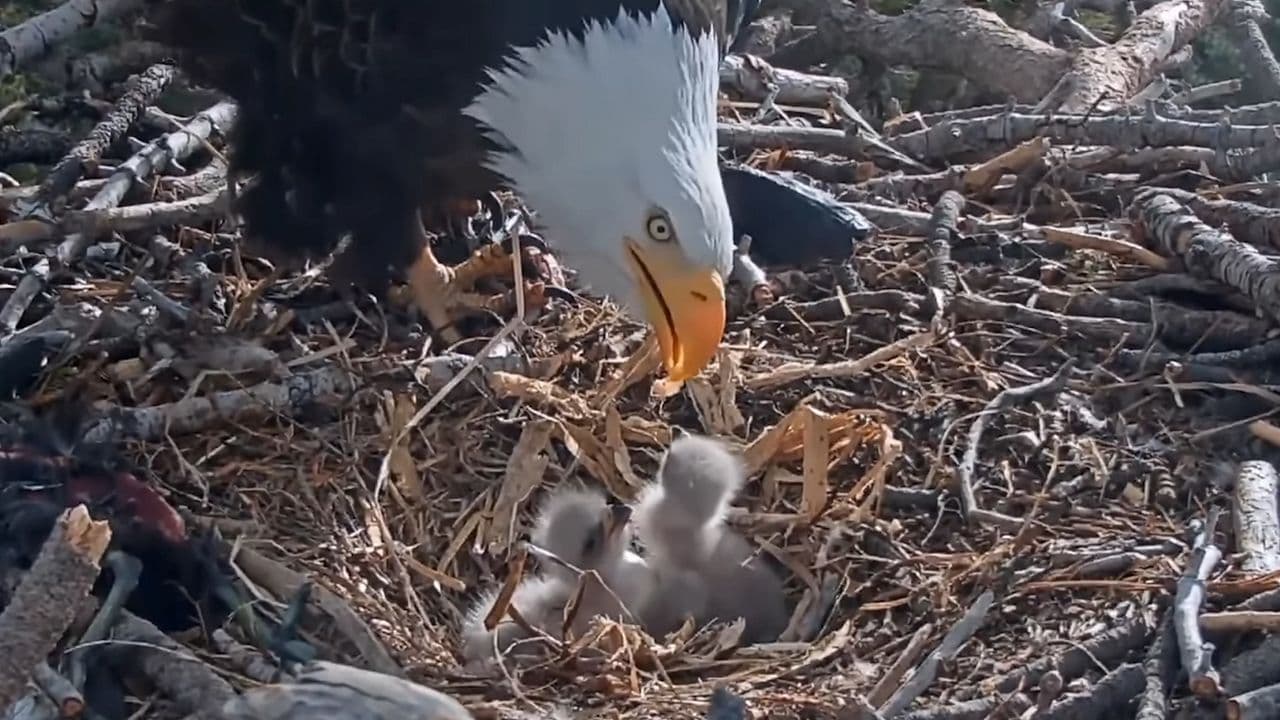
A third eaglet hatched yesterday in the much-loved bald eagle nest near Big Bear Lake, marking a delightful moment for the growing number of wildlife enthusiasts who have been closely watching the family online.
The nest, located in the San Bernardino National Forest near Big Bear, California, has been streaming live via the Friends of Big Bear Valley eagle cam. Observers were excited to witness the third chick hatch, a significant event considering that bald eagles usually lay two eggs, with three being somewhat unusual.
The parents, affectionately named Jackie and Shadow, are local celebrities among bird watchers. According to the Friends of Big Bear Valley, these parents have gained fame for their caring behavior, ensuring their chicks remain healthy and thriving despite the occasional harsh weather conditions.
“The hatch was smooth and perfectly timed,” said Sandy Steers, executive director of Friends of Big Bear Valley. “It’s heartwarming to see this family continue to flourish.”
Wildlife experts emphasize the importance of maintaining a respectful distance, reminding the public that the best way to enjoy and protect these birds is by observing remotely via the eagle cam.
Viewers can continue to monitor the eaglets’ development, celebrating each milestone as the chicks grow into young eagles over the coming weeks.
Amazing
Pocatello’s Last Video Rental Store Preserves Tradition for Devoted Patron

In an era where digital streaming dominates, the closure of Video Stop marked the end of an era for Pocatello, Idaho. However, for one loyal customer, the spirit of the traditional video rental experience continues, thanks to the store owner’s thoughtful initiative.
For over 15 years, 35-year-old Christina Cavanaugh, who has Down syndrome and is mostly nonverbal, maintained a cherished routine of visiting Video Stop almost daily with her mother, Toni. This ritual was integral to Christina’s daily life, providing her with joy and consistency. The prospect of the store’s closure posed a significant disruption to her routine, causing concern for Toni about how to explain the change to her daughter.
Understanding the importance of this routine to Christina, Video Stop’s owner, David Kraning, decided to preserve a portion of the store’s collection. He dedicated a corner in his adjacent business, K & B Kwik Stop, to house these movies, ensuring Christina could continue her beloved visits. This thoughtful gesture not only maintained a sense of normalcy for Christina but also highlighted the deep bonds formed between local businesses and their patrons.
Toni expressed immense relief and gratitude for Kraning’s actions, likening the news to “being sentenced to prison and then getting a reprieve.” She praised the community-oriented approach of Kraning and his staff, who have always been attentive to Christina’s unique needs, even training new employees on how to interact with her during checkout.
While the era of video rental stores may be fading, the compassion and dedication demonstrated by Kraning ensure that, for Christina, the magic of selecting a physical movie remains alive. This story serves as a heartwarming reminder of the impact local businesses can have on the lives of their customers, going beyond transactions to form meaningful, supportive relationships.
Amazing
Former Student’s Surprise $1.8 Million Gift Stuns Wisconsin High School
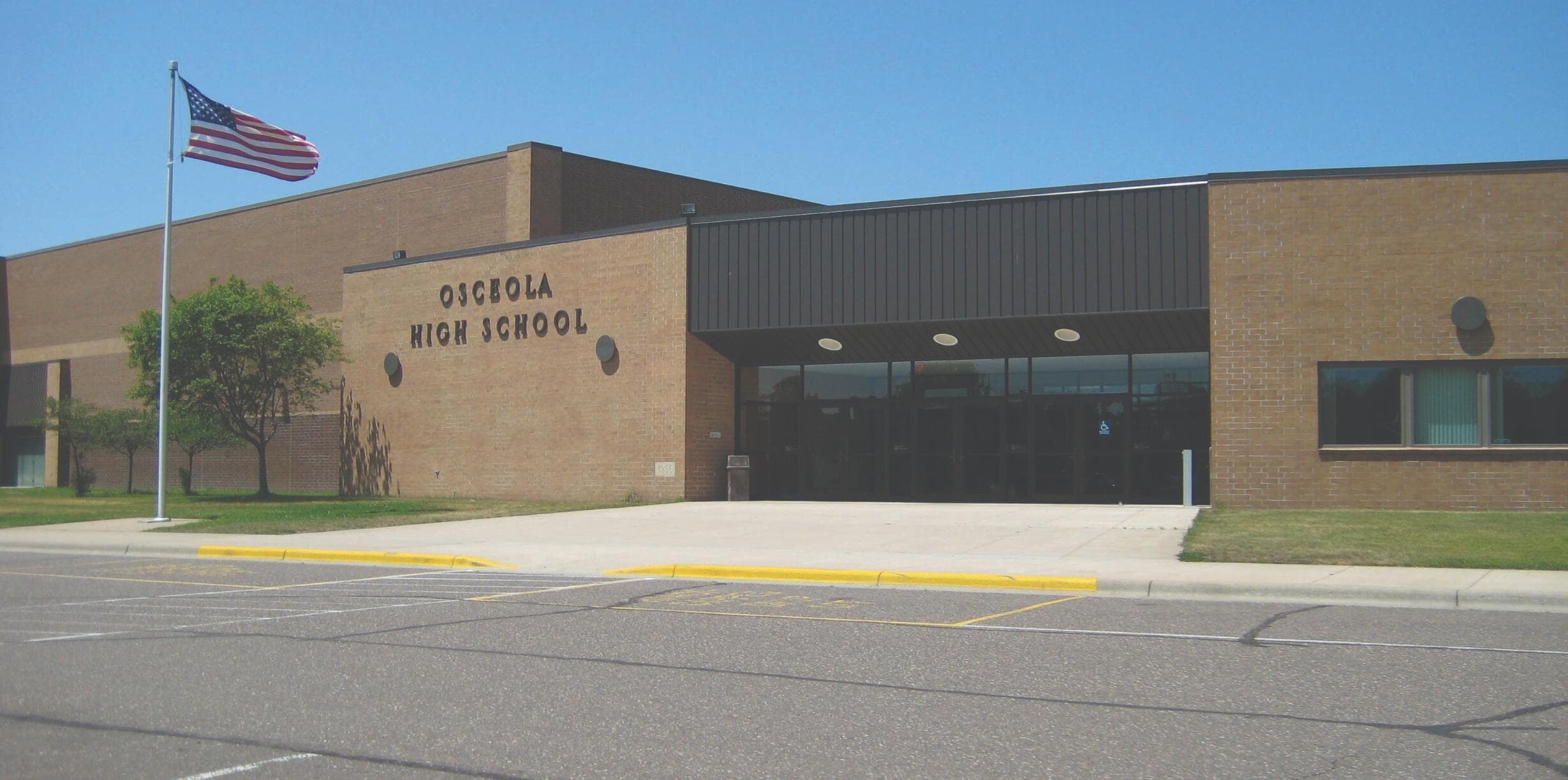
In an age where school budgets are often stretched thin, a small-town Wisconsin high school received an astonishing financial windfall from a former student. Osceola High School, nestled in the tight-knit Village of Osceola, recently learned that a graduate from the Class of 1947, Millicent “Milly” Lindahl, left the school $1.8 million—with more still to come.
A Gift from the Past
Superintendent Becky Styles recalls the moment she learned of the unexpected donation.
“We were absolutely dumbfounded by the amount,” she said. “This doesn’t happen in public schools very often.”
While Milly Lindahl—who later became Milly Chapman—was not widely known in the community, her legacy is now impossible to ignore. A look through old yearbooks revealed she was an active student, participating in the drama club, yearbook committee, school newspaper, and even serving as a cheerleader.
After graduating in 1947, Milly moved away and lived a private life in Maple Grove, Minnesota, with her husband. With no children or immediate family, she made a decision that ensured her name would live on in Osceola—leaving her estate to the high school that had brought her joy in her youth.
Remembering Milly
While details of her later life remain scarce, Superintendent Styles and the local historical society have pieced together a portrait of a woman who cherished her high school years.
“I think it was a place where she found herself, where she could be who she wanted to be,” Styles said. “It was one of the happiest times of her life, and that’s what she held on to.”
Milly and her husband lived quietly, seemingly well within their means. Though her name may have faded from memory in Osceola, her generosity ensures she will be remembered for generations to come.
A Lasting Legacy for Students
Now, the school faces a major decision—how to use the money in a way that honors Milly’s legacy. While many ideas have been floated, Superintendent Styles emphasized that the funds should have a long-term impact rather than being used for short-term needs.
Possible projects include:
- A student commons area to foster community and connection.
- A performance space named in Milly’s honor, recognizing her love of drama and school activities.
- Scholarships or academic programs to support future students.
Before making any final decisions, the school plans to involve the community and wait for the estate to be fully settled.
One thing is certain—Milly Lindahl’s generosity will shape the future of Osceola High School, just as her time there shaped her.
-

 OMG7 years ago
OMG7 years agoA Couple Gave Birth to the Most Beautiful Twins Ever
-

 OMG7 years ago
OMG7 years ago20 Rare Historical Photos
-

 OMG7 years ago
OMG7 years agoHilarious Airport Photos
-

 Cute7 years ago
Cute7 years agoMom Refuses to Let Daughter Eat Sugar and Years Later This is What She Grows Into
-

 OMG6 years ago
OMG6 years agoTop Secret Air Force One Facts That You Never Knew
-
OMG6 years ago
The Funniest Yearbook Photos Of All Time
-
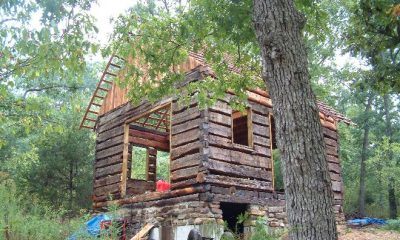
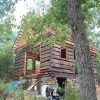 OMG7 years ago
OMG7 years agoRetired Mathematician Restores Log Cabin
-

 OMG5 years ago
OMG5 years agoWhat Happened When This ‘Duck Dynasty’ Legend Chopped Off His Beard?